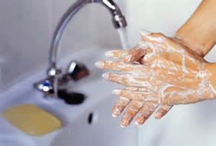Obsessive Compulsive Disorder

What is OCD and How is it Treated?
If you have OCD you most likely experience unwanted recurring intrusive thoughts and images that cause anxiety and distress. It is often difficult for you to manage daily functioning because of the distress that the thoughts create. To cope with these invasive thoughts you may attempt to ignore, suppress or manage them by doing some specific behavior, or by thinking alternative thoughts. This is known as a compulsion or ritual.
There are both Overt Compulsions and Mental Compulsions.

Overt Compulsion examples:
- You avoid stepping on cracks, or you may wash your hands excessively.
- Repeated checking behavior is seen when, for example, you worry excessively about whether you locked the door and return repeatedly to be sure it is locked.
- You may also seek reassurance from others.
Mental Compulsion examples:
- You may repeat numbers in your head.
- You may repeat the intrusive thought in your head.
- You may say some “counteracting” word or phrase to yourself.
These acts are invariably ineffective in managing the distress and may interfere with daily activities.
Common OCD Themes
People with OCD seem to focus their concerns around several themes:
- Fear of Harm or Harming Others (violent thoughts with issues concerning impulse control)
- Contamination
- Religious Concerns
- Symmetry, Exactness and Perfectionism, also known as “just right” OCD
- Sexual Obsessions
OCD is a treatable condition.
Read more about OCD treatment
Treatment for OCD
CBT & Exposure and Response Prevention (ERP) for OCD
The evidence based treatment of choice for OCD is (ERP). It is the gradual exposure of a person to the situations or objects triggering anxiety.
The steps in treatment for OCD are Psychoeducation and Exposure and Response Prevention (ERP). The ultimate goal of ERP is habituation, attained by using both In Vivo and/or Imaginal exposures.
- In Vivo exposure involves gradually exposing a client to the feared image, object or thought which has previously been intolerable and which has been avoided.
- The process is accomplished by our working together to create a “fear hierarchy” consisting of a ranked list of the least-feared object, situation or thought, to the most-feared object, situation or thought.
- During the initial stages of treatment one learns that with exposure, anxiety eventually diminishes. The treatment principle is known as habituation.
The process is repeated at each stage of the hierarchy as anxiety tolerance builds and anxiety eventually abates.
- With Imaginal Exposure, gradually facing the feared aspect of the obsession is a similar process. Imaginal exposures are used when it is not feasible to expose the person to the actual obsession. Examples of these types of obsessions would be the fears of harming a person, or becoming ill with a serious disease.
- In working with Imaginal Exposures, a script which captures some element of the obsession is created collaboratively by the client and therapist. The written script is made into a digital recording or retained as a script. The client repeatedly listens to the recording or reads the script with the therapist and at home, until tolerance grows. Work at home is an important part of the process to help change behavior.
Read more about Other Conditions.
Contact Dr. Schonberg at (908) 273-3133 if you would like to arrange a consultation for OCD treatment.
